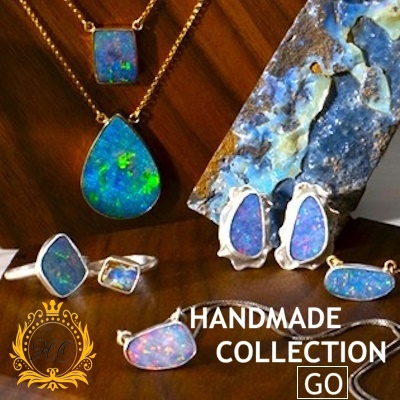What is opal? how is opal formed?
Posted by Australian Opal Direct on 13th Dec 2021
Opal, the enchanting gemstone with its mesmerizing play of colors, traces its origin to a fascinating geological process. It is formed through the intricate interplay of silicon dioxide and water. The genesis of opal unfolds as water weaves its way down through the earth, collecting silica from sandstone along its journey. This water, now enriched with a concentration of silica, becomes a crucial agent in the opal-forming process.
As the water, enriched with silica, navigates the intricate pathways within the earth and encounters conducive conditions, a transformative alchemy unfolds. The final act in this geological symphony occurs as the water, having played its crucial role in opal formation, succumbs to the forces of evaporation. Gradually relinquishing its liquid form, the water leaves behind a residual gift—a delicate yet potent deposit of silica. This residual silica, now intricately arranged within the voids and crevices, solidifies into the exquisite gemstone we know as opal. The evaporation process marks the culmination of opal's journey from solution to solid, capturing the essence of nature's patient artistry beneath the earth's surface.
This cyclical dance between water, silica, and the geological intricacies of the earth constitutes a grand narrative that unfolds over the vast canvas of time. Repeated tirelessly, over the course of millions of years, this intricate cycle weaves a tale of patient transformation and artistic precision. As the water infiltrates the earth, gathering silica and weaving its way through the labyrinth of natural faults and decomposed fossils, it perpetuates a timeless ritual. The gradual process of evaporation, a silent alchemy occurring within the concealed realms beneath the earth's surface, leaves behind the legacy of its journey—a deposit of silica meticulously arranged within the geological tapestry.

Australia, renowned as the Opal Capital of the World, proudly boasts three major varieties of natural sediment Precious Opal, each with its distinct characteristics and geological origins. The opulent array of Australian opals includes:
1. Black Opals from Lightning Ridge in New South Wales
Distinguished by their captivating dark body color, Black Opals from Lightning Ridge are revered for their intense play of colors against a deep backdrop. This region is renowned for yielding some of the most vibrant and prized opals globally, with their unique visual appeal making them highly sought after by collectors and enthusiasts alike.
2. White Opals from Coober Pedy in South Australia
Nestled in the arid landscapes of South Australia, Coober Pedy is famed for producing White Opals. These opals showcase a milky white body tone, providing a subtle yet enchanting canvas for the iridescent play of colors. Known for their elegance and versatility, White Opals from Coober Pedy hold a special place in the opal spectrum.
3. Boulder Opal from Opalton in Queensland (near our flagship store).
Queensland, home to our flagship store, is celebrated for its unique Boulder Opals sourced from Opalton. These opals feature a robust combination of opal and ironstone, resulting in a gemstone of exceptional strength and visual appeal. The intricate patterns and brilliant colors displayed against the solid ironstone backdrop make Boulder Opals a distinct and prized variety.
Australia's opal fields, each with its geological nuances, contribute to the rich tapestry of opal varieties, ensuring that collectors and connoisseurs have a diverse array to choose from. Whether it's the striking Black Opals, the refined beauty of White Opals, or the robust elegance of Boulder Opals, each variety tells a story of the unique geological processes and natural wonders that have shaped these precious gemstones.
The many variations of Opal depend on several factors.
The intricate dance between the wet and dry periods in the climate holds a key role in shaping the geological dynamics of the region. The alternating cycles of rainfall and drought give rise to a fascinating phenomenon—the rising and falling of the water table. This fluctuation in the water table plays a crucial role in concentrating silica that is present in solution within the earth. During the wet periods, as rainwater infiltrates the ground, it carries dissolved silica along with it. As the water table rises, it acts as a natural conveyor, transporting the silica-rich solution to various layers of the geological strata.


"Boulder Opal Country" goes beyond the surface, providing an in-depth exploration of the geological wonders that give rise to these precious gems. Gain insight into the intricate process of opal mining, witnessing the dedication and skill required to unearth these hidden treasures. The film offers a rich tapestry of visuals, capturing the breathtaking landscapes that serve as the backdrop to the opal mining activities in Queensland.
YOUR SOURCE FOR MINER & MANUFACTURER DIRECT GENUINE OPAL JEWELLERY











